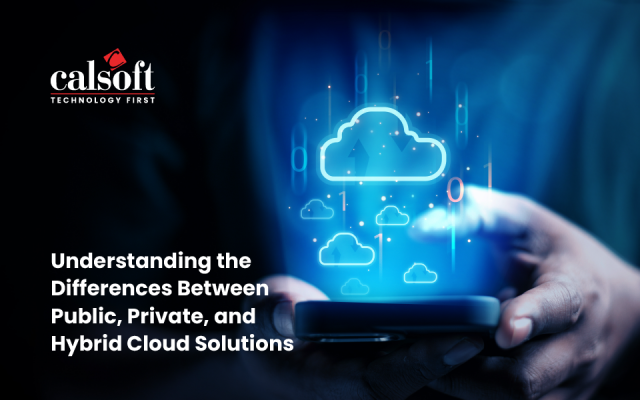In these uncertain times, business continuity is every enterprise’s priority worldwide. The need for resilience has been added to the desire to be agile and this has neatly dovetailed into enterprise digital transformation initiatives. In a recent study, 8 out of 10 enterprises opined that the cloud is more important today than the previous year and according to Gartner, the worldwide spending on the public cloud will grow by 23% this year.
But what makes the public cloud so popular among enterprises?
- Public cloud is cost-effective. Enterprises pay for the infrastructure they use instead of paying a fixed price.
- It is easy to configure and scale up or ramp down.
- Most importantly, it provides 99% uptime with almost no risk of failure. The system interconnects several servers. So, even if there’s a single failure in the server, the other servers manage the workload automatically. That way, it ensures that there is no unplanned disruption in the business.
While the advantages of the public cloud are many, it’s not all great news.
Top 5 Challenges in Adopting Public Cloud
Lack of expertise in migration
According to IDG, 28% of enterprises (especially small and medium enterprises) cited lack of expertise as their main challenge in cloud migration. Migrating an existing application to the public cloud requires expertise. The migration can fail without a good migration strategy or the wrong choice of cloud service model.
Migrating mission-critical applications such as the ERP suite to the cloud invites uncertainty about whether it would work in the public cloud as it did on-premises. Application sizing is another migration-linked concern for enterprises. Public cloud infrastructure is shared with other enterprises and hence, enterprises have to consider whether the size of legacy applications that worked within a dedicated environment will pose a challenge in a shared environment. Enterprises often get stuck at this stage due to a lack of expertise and knowledge about such roadblocks they encounter during migration.
Inability to keep pace with new updates
Public cloud providers introduce new updates, features, and tools to help enterprises innovate and grow. These updates help enterprises innovate and gain a competitive advantage. However, this also poses a challenge for them when it happens at a rapid pace.
Enterprises are unable to monitor the changes and adapt to them. Sometimes the cloud infrastructure changes faster than the applications running on it. All these factors impact usage and accessibility plans. As studies reveal, enterprises only derive 20% of the cloud’s value. Given the enormous value that public cloud can provide enterprises, 20% utilization suggests a lot of underutilized potential by enterprises.
Governance and compliance issues
In today’s times, governance and compliance issues are a major concern for enterprises. 39% of them have reported this as one of the primary issues for hesitance in public cloud adoption.
Some of the common governance challenges include lack of accountability, inability to establish best practices of cloud compliance among key stakeholders, no planned disaster recovery process, and lack of training. Cloud compliance becomes a bigger challenge, especially in highly regulated sectors like healthcare, where enterprises have to comply strictly with regulations like HIPAA. Enterprises have to ensure that their cloud strategy complies with agreed policies and procedures and aligns with the overall business strategies. They have to carefully bridge the gap between using the public cloud for data storing and backup and adhering to the industry regulations to ensure their business’ safety.
Security issues
According to a survey conducted last year, 86% of CIOs cited cloud security as the top priority for spending IT budgets. As more data and applications get added to the cloud, enterprises are tasked with protecting the applications and data from unauthorized and unauthenticated users, identity theft, data breaches, and lack of robust security architecture.
Security has become a priority, especially since the pandemic, as most employees are working remotely. Although the cloud providers safeguard their cloud offerings, enterprises have to secure their applications on the cloud too. They have to ensure that they meet security guidelines and that the security team works in collaboration with the cloud service providers to create a comprehensive and robust data security strategy. Lack of security awareness, skilled resources, and the absence of tools and procedures could result in disastrous cloud security outcomes for the enterprise.
Inability to deal with multiple clouds
Vendor lock-ins and escalating cloud application costs are common challenges with the public cloud. Apart from these issues, enterprises also have to ensure that all applications are not concentrated on a single public cloud environment, exposing the applications to security vulnerabilities. To overcome these issues, they are working with multiple cloud providers and encountering increased complexity.
Enterprises are partnering with managed service providers (MSP) to manage their applications across multiple cloud environments. While this helps enterprises manage the escalating costs, reduce operational risks, and prevent vendor lock-ins, they face challenges in efficiently managing the applications. They have to ensure that all the applications across different environments adhere to the same compliance, security policies, and operational governance. This increases the complexity of managing the applications on the cloud for enterprises.
Conclusion
The cloud computing market is constantly evolving to meet the demands of enterprises. Enterprises must choose the right public cloud service provider, plan the budget, build use cases, migrate to the cloud, train the team, and much more. Planning and migrating to the cloud can be a challenge. That’s where enterprises need help from experts who can help them with cloud transformation.
At Calsoft, we offer end-to-end cloud support, so enterprises can conduct their business seamlessly. Our team of experts helps enterprises with:
- Cloud migration
- Cloud-native application development
- CloudOps
- Cloud engineering and SaaS enablement
- Data management and analytics on the cloud
- Cloud platform services
- Datacenter modernization
We understand the business needs and help enterprises with solutions that can help them achieve their business goals by leveraging the power of the cloud. To know more, contact us.






